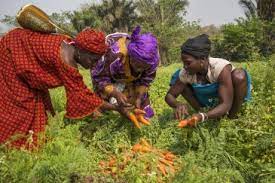Agrifood systems
Food systems are complex. Adding to the complexity, food systems display heterogeneity, with important differences between smallholder quinoa farming in the Andes, extensive cattle grazing in Mongolia, and high-tech greenhouse vegetable production in the Netherlands. Synergies and trade-offs could have important implications for the choice of policy instruments and for the calibration of how much intervention is needed,’ OECD specifically argues for careful and fact-based policies taking into account vast regional differences. ‘It is imperative for policymakers to scrutinize these hypotheses before using them as the basis for policy decisions.
Demand
At present day, OECD member countries span the globe and regularly meet to identify economic and developmental issues, discuss and analyze them, and formulate policies. In the new report, OECD highlights the apparent need to reform agricultural and fisheries policies creating adverse environmental effects, while also underlining that making better policies for food systems will require overcoming disagreements on facts, taking into account diverging interests and values among stakeholders and designing inclusive policy processes to avoid capture by special interests.
Yield gaps – a more nuanced take
As another example, application rates of synthetic nitrogen are exceptionally high in East Asia and Western and Central Europe.On a policy level, OECD warns for a too-narrow focus on the innovation that in the past has made yield gains possible, arguing that new technologies could be rendered useless without investments in education, lack of access to credit for farmers, poor quality of the available technology, or unwanted barriers to business expansion such, such as land tenure systems and gender barriers. Despite gains made, significant yield gaps continue to exist around the world. Further production growth in major exporting regions like North and South America, Russia, or Ukraine is expected to contribute to global supply growth.

As the regions experiencing the most significant increase in population and food demand are not those with the greatest potential for supply growth in the short-to-medium term – international trade will become increasingly important for global food security by balancing the deficits of net food importers with the surpluses of net food exporters,’ OECD writes. However, closing yield gaps in Sub-Saharan Africa could significantly reduce the region’s food import bill. A policy to raise agricultural productivity could reduce resource stress, implying less need for agri-environmental measures. Still, it could lower food prices and so increase the demand for policies to curb overconsumption of some products.
Seeds, livestock & processed foods
OECD is not afraid to mention the detrimental effects of increasing corporate control over the food chain and plant breeding, clarifying this by making a comparison between Monsanto’s annual research budget of 1.6 billion dollars and the 849 million CGIAR had at its disposal. ‘A potential trade-off associated with this shift from publicly to privately financed R&D is that private-sector investments are likely to be skewed towards crops with larger commercial markets,’ the OECD-researchers warn.
European Union
Inside Europe, ruminant livestock is an important source of protein and livelihoods – but also a significant contributor to environmental problems.In September 2021, the United Nations will be convening a Food Systems Summit that will further elaborate on the food systems approach capable of simultaneously making progress on food security, nutrition, livelihoods and environmental sustainability, OECD now suggests in the ‘Making Better Policies for Food Systems’-report. ‘With only ten years left to meet the Sustainable Development Goals, there is increasing recognition among researchers, policymakers, stakeholders, and civil society of the crucial role played by food systems,’ the report states. In practice, this would mean that agricultural policymakers would place a greater emphasis on the possible effects of farm policies on nutritional and environmental outcomes.
Similarly, where environmental problems related to agriculture have been addressed through agri-environmental policies,a food systems approach opens the possibility of using other instruments, such as those that promote consumer or enterprise behaviour changes.
